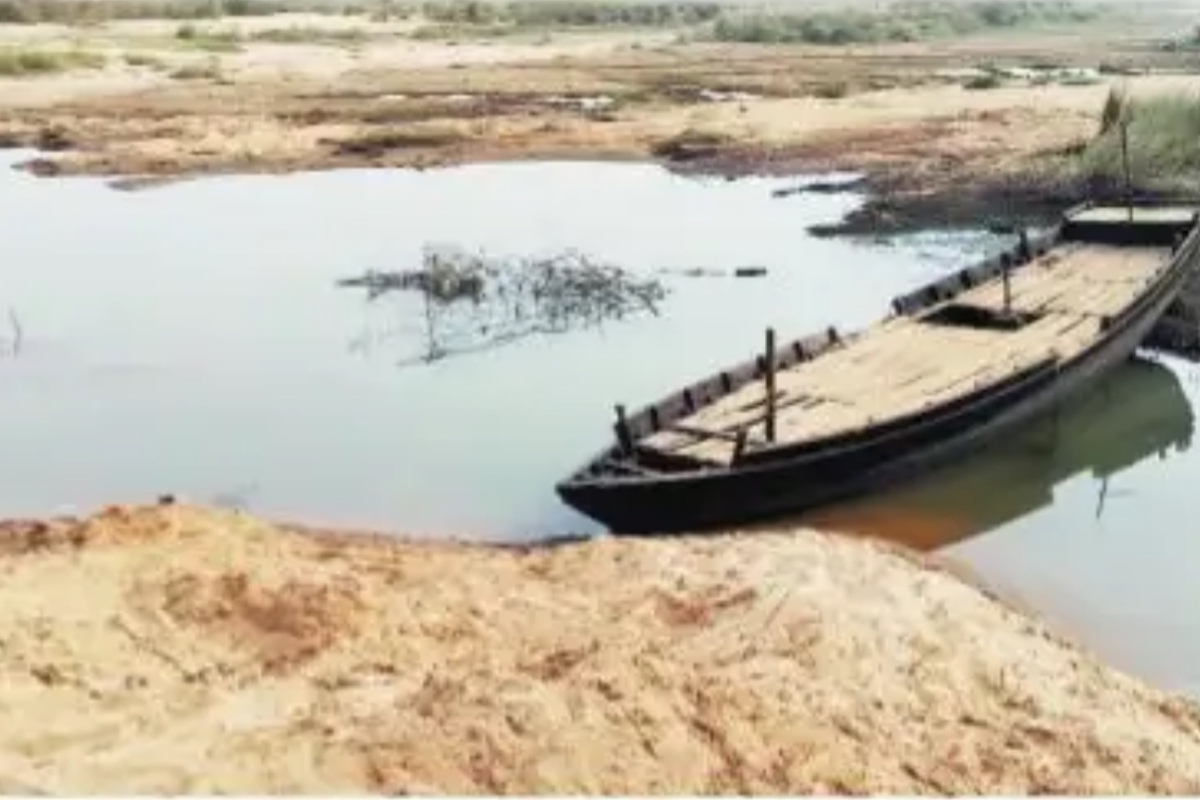In the heart of India’s Chota Nagpur region, where the Subarnarekha river weaves its way through tribal landscapes, a tale of environmental degradation unfolds, spelling doom for both humans and the delicate ecosystems that rely on this lifeline.
Originating from the enchanting Nagdi village, a mere 15 kilometres from the bustling capital of Jharkhand, Ranchi, the Subarnarekha stretches 474 kilometres, traversing through the states of Odisha and West Bengal, before embracing the Bay of Bengal in Baleshwar. Once known for its beauty and revered by tribes as a source of sustenance, the river now grapples with pollution and unchecked sand mining, threatening not only the livelihoods of its people but also the diverse aquatic life that calls it home.
Advertisement
In the recent past, the Subarnarekha’s waters bore witness to a symbiotic relationship between the river and the tribal workforce engaged in filtering sand and extracting gold from its bed. A laborious yet rewarding endeavour, these local workers could collect between 60 to 80 particles of gold in a single month. However, the river’s decline tells a different story, one of anthropogenic threats and a steady deterioration of its once-pristine state.
Environmentalists professor Mrinmay Ghorai from Panskura Banamali College (autonomous) conducted a study revealing that the health of the Subarnarekha has plummeted below average levels over the past three years. Jamshedpur, a significant urban centre, and industries, including the renowned Tata Steel, heavily depend on this water source, making the degradation of the river a matter of regional concern.
Dr Ghorai’s findings indicate disturbingly high pollution levels near urban centres, with critical indicators such as dissolved oxygen levels falling below desirable limits at key points like Galudih, Ghatsila, and Jamsola. Moreover, the pH level has exceeded permissible limits, sounding alarm bells for the delicate aquatic balance.
The encroachment by illegal sand miners in the lower reaches of the Subarnarekha has not only altered its course but has also disrupted the livelihoods of local residents, particularly fishermen, who witnessed a substantial decline in their income. Despite legal interventions, continuous illegal sand mining persists, with the land revenue department acknowledging the issue but seemingly unable to curb the practice effectively.
The department, in a shocking revelation, collected revenue amounting to Rs 78 crore during the fiscal year 2022-2023 from the Subarnarekha, further underscoring the brazen exploitation of this natural resource. As the river’s ecosystem crumbles, fish breeding grounds face destruction, and several species teeter on the brink of vulnerability or near-threatened status.
Dr Ghorai’s meticulous assessment of 58 fish species exposes a precarious scenario: 81% classified as “least concern,” 9% as “near-threatened,” 5% as “data deficient,” and 5% as “vulnerable.” Urgent action is needed to protect the Subarnarekha and its unique biodiversity as the professor prepares to submit his report to the government. a call for concrete steps to save this once-golden river on its journey from Jharkhand to Bengal and Odisha before its final embrace with the Bay of Bengal near Talsari.











